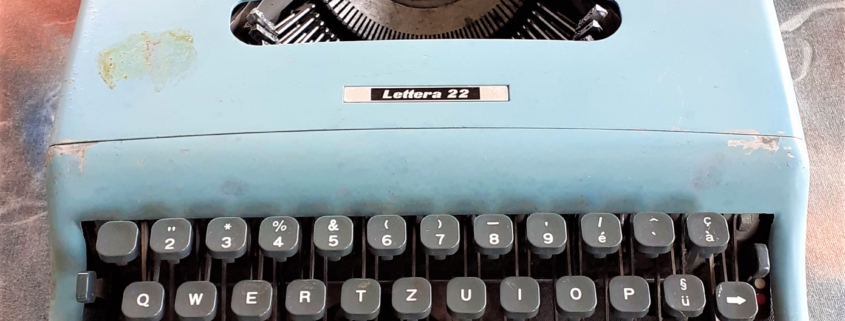What happened to the Typewriter?
If you are of a certain vintage you’ll probably know what a typewriter is. You have either used one or can remember the clatter and ringing sounds of a typewriter. I recently discovered my old typewriter. But what actually happened to the typewriter?
Since the 1880’s the typewriter became an almost indispensable part of almost anything that had to do with writing. That lasted until the 1980’s when the computer slowly took over. Starting my degree many years ago at University, we had to take typing lessons to get our typing up to speed. Soon after we had to type all our exams. No more writing, only typing. That was scary!
Fast forward four years and I started working in the media. Typewriters were the tool we used. At the newspaper where I worked, you had to type your article in threefold and if you made a mistake you just used the upper case ‘X’. No tippex, it would’ve taken up too much valuable time. When I moved to a news agency computers were already replacing the typewriter.
Godrej & Boyce
Godrej and Boyce, a Mumbai-based manufacturer of typewriters, were the last company in the world to produce manual typewriters. They shut down the production plant in Mumbai in 2011, with only a few hundred machines in stock. They were also the first company in Asia to make their own manual typewriter, the Godrej Prima.
More typewriters
Many different typewriters saw the light, although the design was more or less standardized. This included the Remington, IBM, Olivetti, Royal, Olympia, Brother and many more. Development on the typewriter kept going with electrical typewriters and also those using a typeball or ‘golfball’ instead of the metal type hammers. This helped to eliminate the “jamming” of keys.
Although the typewriter is still used by some people, I do believe it is more of a hobby. It is also much harder (physically) to type on a typewriter than on any of the newer keyboards, so why would you?
Qwery-keyboard
One thing left over from the typewriter is the qwerty-keyboard. If you’ve ever typed really fast on a mechanical typewriter with the type hammers moving up and down quickly, you know they can collide and eventually jam together. You’ll then have to reach inside the machine and disentangle them. That is why on a qwerty-keyboard, the most frequently combined letters of words will be widely separated to limit the amount of possible jams of the type hammers. The qwerty keyboard, interestingly, differs slightly in typewriters that were used in certain non-English speaking countries, like France, Switzerland, Germany and so forth, because the most commonly used letters vary slightly from language to language.

Christopher Latham Sholes was the inventor of the clever qwerty-keyboard. And while it is probably not necessary to have a qwerty keyboard anymore – seeing that we don’t have the problem of type hammers jamming together – we still use it very much today with all the typing we do on our i-pads, laptops, desktops and smart phones. Something historic in something so slick and modern.
I leave the last word, or sound, to Leroy Anderson, the composer behind the delightful Typewriter Concerto. Sheer brilliance with the clatter of keys and ringing of bells.
Happy typing.




Leave a Reply
Want to join the discussion?Feel free to contribute!